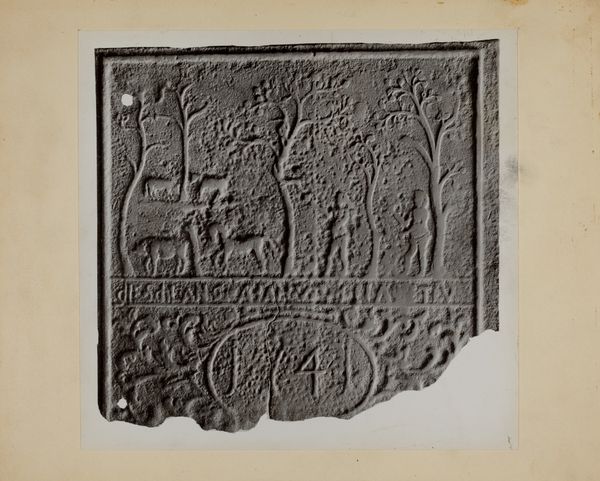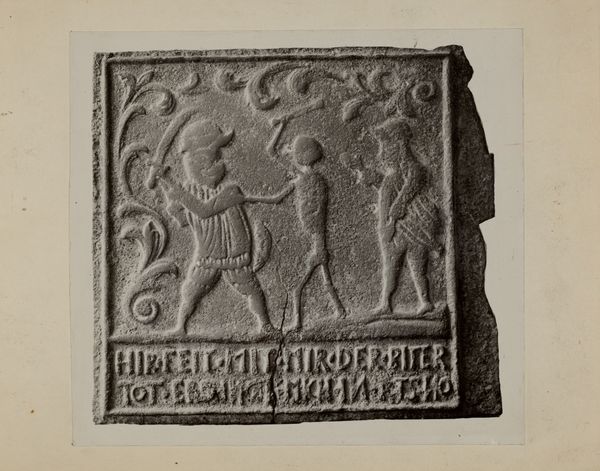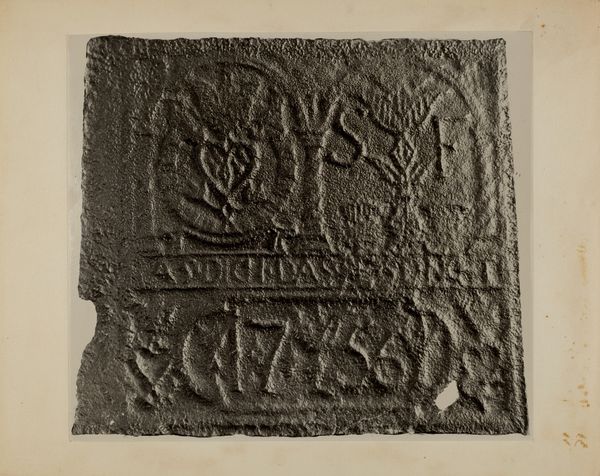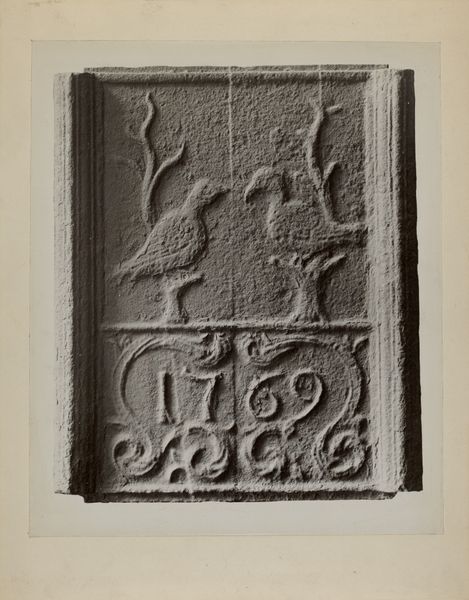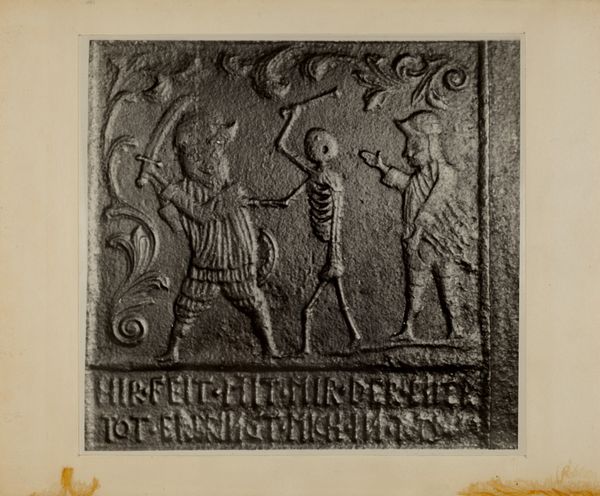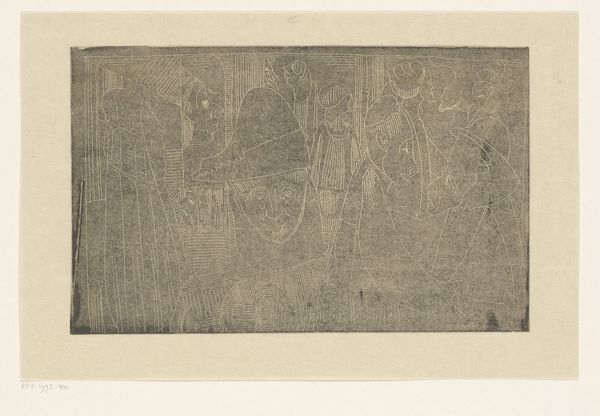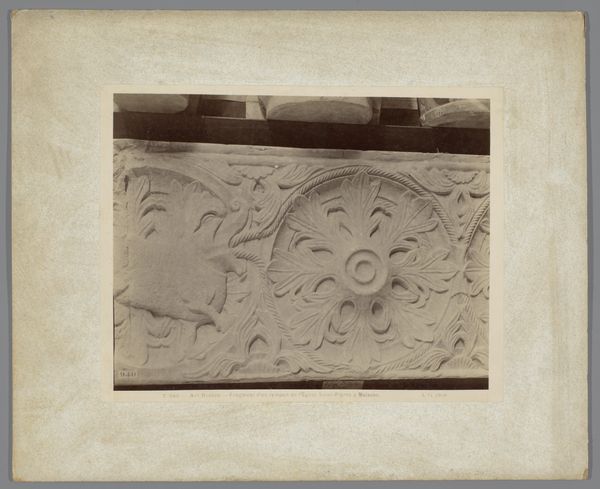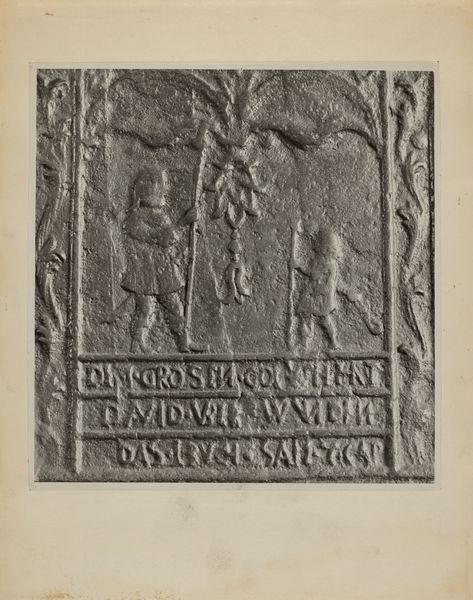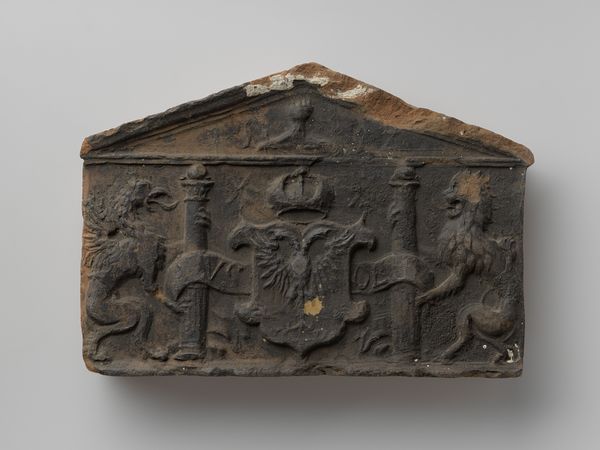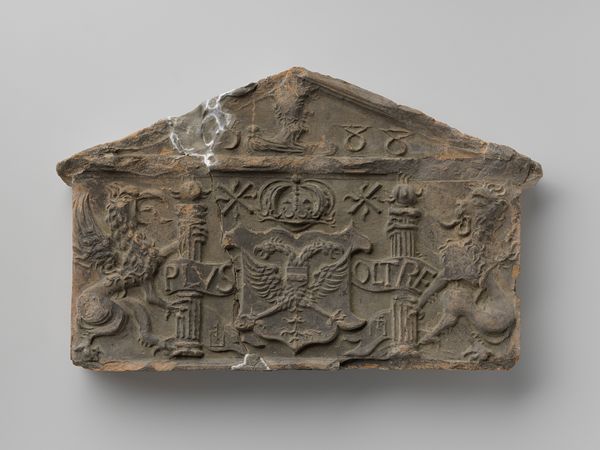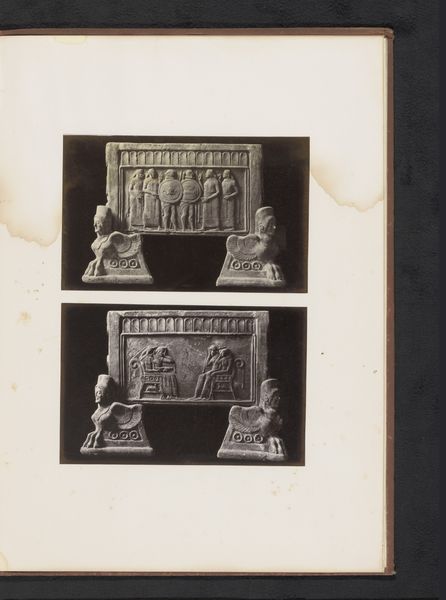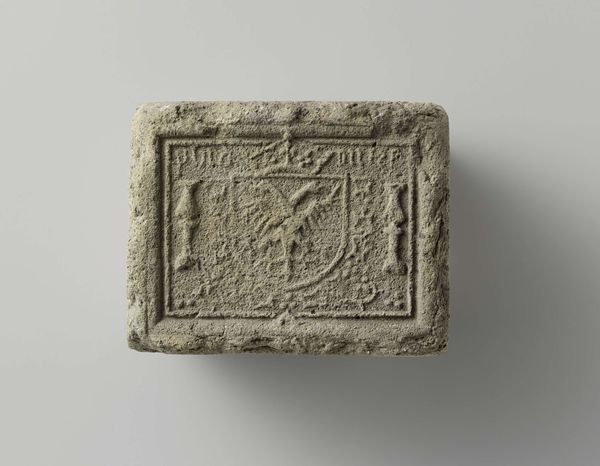
carving, metal, relief, wood
#
carving
#
metal
#
sculpture
#
relief
#
figuration
#
folk-art
#
geometric
#
wood
Dimensions: overall: 18.8 x 21.2 cm (7 3/8 x 8 3/8 in.) Original IAD Object: 27" wide; 24 3/4" high
Copyright: National Gallery of Art: CC0 1.0
Curator: This piece, dating circa 1936, is a Pa. German Stove Plate attributed to Charles Von Urban. Its stark simplicity strikes me immediately. Editor: Simplicity? I perceive a primitive strength. The rough-hewn texture of the metal and the deep relief carvings give it a weighty, grounded feel. Curator: The plate is constructed primarily of metal, showcasing a central, vacant rectangle framed by upper and lower registers adorned with stylized images. Observe the linear composition, divided into these distinct planes. The upper register with its bold inscription... Editor: "...HRISTEIN IEGER AUF DER JAGT ALSO..." Yes, a sort of invocation perhaps relating to Christ as a hunter or hunt. The artist seems keen on integrating textual elements into visual space, almost as graphic embellishments. The materiality here really comes into play. The stove plate suggests both a domestic function and, in these adornments, an attempt to transcend utilitarian purpose. We see carving – likely from wood, considering the detail and possible influence on the metal mold, hinting at various stages and techniques within the manufacture of folk art itself. Curator: Indeed. The lower register houses highly abstracted figures—deer, human, and geometric—resembling alchemical symbols. They’re rendered in this fascinating folk style, imbued with a ritualistic, totemic quality. I would argue that each geometric symbol functions as a carefully conceived signifier that communicates a certain spiritual element. Editor: And that connection is fascinating. Because these signs might point to specific stories or practices central to this community in this context. Think about what kind of labor goes into crafting something intended to produce warmth and potentially bring good fortune? Its use extends beyond mere practicality; the artistry suggests the intention to charge everyday objects with layers of symbolic meaning tied to human experience within specific geographical locations. Curator: An interesting point about everyday objects! There is so much semiotic content. Even its partial destruction near the top serves to accentuate these elements and creates a certain disquieting yet harmonious feeling when contrasted by simple lines. Editor: So, in scrutinizing an object meant for daily use in a particular home—maybe, a farmer’s hearth we unveil how that object embodies far more than simply “decoration." We uncover cultural labor rendered tangible. Curator: Precisely. I am pleased our analysis converged in such a surprising way! Editor: Indeed, a delightful encounter with craftsmanship, materiality, and symbolic language.
Comments
No comments
Be the first to comment and join the conversation on the ultimate creative platform.
